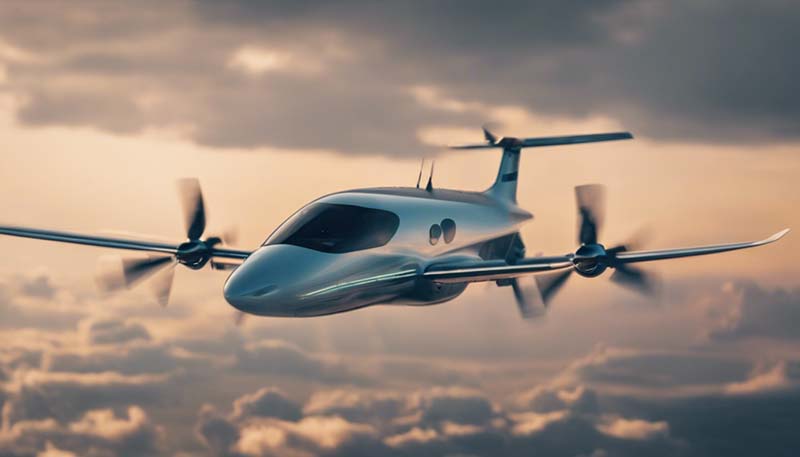The aviation industry has come a long way since the Wright brothers took their first flight in 1903. Over the past century, we have seen the development of increasingly efficient and powerful aircraft, enabling us to travel farther and faster than ever before. However, as our reliance on air travel continues to grow, so too does the demand for sustainable and environmentally friendly solutions. Enter the electric aircraft – a burgeoning sector of the aviation industry that promises to revolutionize the way we fly and pave the way for a greener future.
The concept of electric aircraft is not new. In fact, the first electric flight took place as early as 1957. However, it is only in recent years that significant advancements in battery technology and electric propulsion systems have made it possible for electric aircraft to become a viable alternative to their fossil fuel-powered counterparts. As we stand on the cusp of a new era of flight, let us explore the factors driving the rise of electric aircraft, the challenges they face, and the potential benefits they offer for the future of aviation.
Advertisement
Factors Driving the Rise of Electric Aircraft
There are several factors driving the rise of electric aircraft, with the most significant being the urgent need for sustainable and environmentally friendly transportation solutions. The aviation industry is responsible for approximately 2.4% of global CO2 emissions, and with air travel demand expected to triple by 2050, it is crucial that the industry finds ways to reduce its environmental impact.
Another factor contributing to the growth of electric aircraft is the increasing awareness of the economic benefits they offer. Electric propulsion systems are more efficient than traditional combustion engines, which means they require less energy to operate. This translates to lower operating costs for airlines, making electric aircraft an attractive investment opportunity.
Technological advancements have also played a crucial role in the rise of electric aircraft. Improvements in battery technology have led to a significant increase in energy density, allowing electric aircraft to achieve longer flight durations and carry heavier loads. Furthermore, advances in lightweight materials and aerodynamic design have made it possible for electric aircraft to become more efficient and environmentally friendly.
Challenges Facing Electric Aircraft
Despite the many advantages of electric aircraft, there are still several challenges that need to be addressed before they can become a mainstream mode of transportation.
One of the primary challenges is the limited range of electric aircraft. Current battery technology limits the distance electric aircraft can travel before needing to recharge. While this is not an issue for short-haul flights, it poses a significant barrier to long-haul travel. Researchers are working tirelessly to develop more advanced battery technology that can provide longer range and faster charging times, but it remains a challenge that needs to be overcome.
Another challenge is the infrastructure required to support electric aircraft. Airports and other aviation facilities will need to be retrofitted with charging stations and other necessary infrastructure to accommodate electric aircraft. This will require significant investment and collaboration between governments, industry stakeholders, and technology providers.
Finally, there is the challenge of public perception. Many people are still skeptical about the safety and reliability of electric aircraft, and it will take time to build trust and confidence in this emerging technology. As more electric aircraft enter the market and demonstrate their safety and efficiency, public perception is likely to change.

Potential Benefits of Electric Aircraft
If the challenges facing electric aircraft can be overcome, there are numerous potential benefits for the future of aviation.
The most significant benefit is the reduction in greenhouse gas emissions. Electric aircraft produce zero emissions during flight, which will help to significantly reduce the environmental impact of air travel. This is particularly important as the world grapples with the effects of climate change and seeks to reduce its reliance on fossil fuels.
Electric aircraft also have the potential to be much quieter than traditional aircraft, which could lead to a reduction in noise pollution around airports and in the communities that live near them. This could have a positive impact on quality of life and even lead to the relaxation of noise regulations, allowing for more flights and increased access to air travel.
Additionally, as mentioned earlier, electric aircraft have the potential to lower operating costs for airlines. This could lead to more affordable air travel for passengers and increased competition among airlines, driving innovation and improvements in the industry.
Conclusion
The rise of electric aircraft presents a significant opportunity for the aviation industry to address its environmental impact and pave the way for a more sustainable future. While there are still challenges to overcome, the potential benefits of electric aircraft make them an exciting prospect for the future of flight.
As technology continues to advance and the need for sustainable transportation solutions becomes more urgent, it is likely that we will see an increasing number of electric aircraft entering the market. Whether they will completely replace traditional aircraft remains to be seen, but they certainly have the potential to play a significant role in shaping the future of aviation.
As we stand on the cusp of a new era of flight, it is an exciting time for the aviation industry and for those who rely on it for transportation. The rise of electric aircraft offers hope for a greener, quieter, and more affordable future of air travel, and we eagerly await the day when these innovative aircraft become a common sight in our skies.